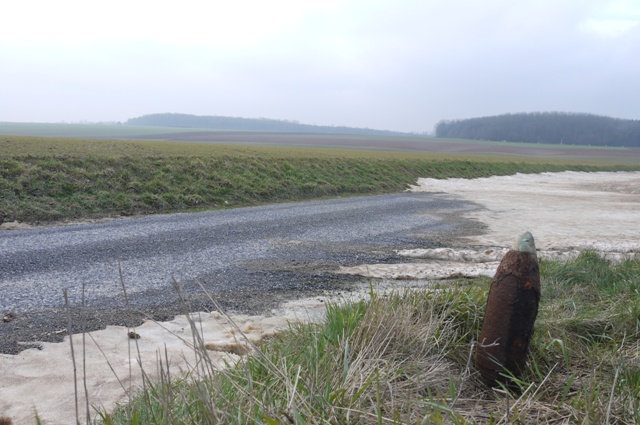The usual post on some of the more interesting items we came across by field walking during our March trip. As I've said before we don't metal detect and all explosives are left well alone!
German shell, Serre
Essex Regt Cap Badge, Serre - almost certainly belonging to someone from 2 Essex which were involved in the attack at Serre on 1st July
Hampshire Regt shoulder title, Beaumont Hamel. From the attack between Hamel and Beaumont Hamel on Sept 3rd, 1916
Pile of shells and Mills bombs plus a 3" Stoke Mortar round and a rifle grenade - Gueudecourt
British shell (4" ?), Gueudecourt with the Caribou in the distance
German trench mortar shell, Lesboeufs
German shell, Lesboeufs
Remains of British leather cartridge pouch, Gird Line, Gueuecourt
British 18 pdr HE with Bernafay and Trones Woods in the background
British 18 pdr shell, 3" stokes mortar and remains of British mess tin, Lonely Copse, Monchy le Preux
German shell, Rifle Trench, Monchy le Preux
German 'egg' grenade, Rifle trench area, Monchy le Preux
British HE shell, Observation Ridge, overlooking Battery Valley
British HE shell, Battery Valley
French rifle, with bayonet still attached, from the 1915 battles at Serre. It was not just the British that fought at the Somme!
Remains of German mess tin, Beaumont Hamel
British Mills bombs, Trones Wood - note the ring pull still in place on the nearest grenade


.JPG)















Comments
Post a Comment